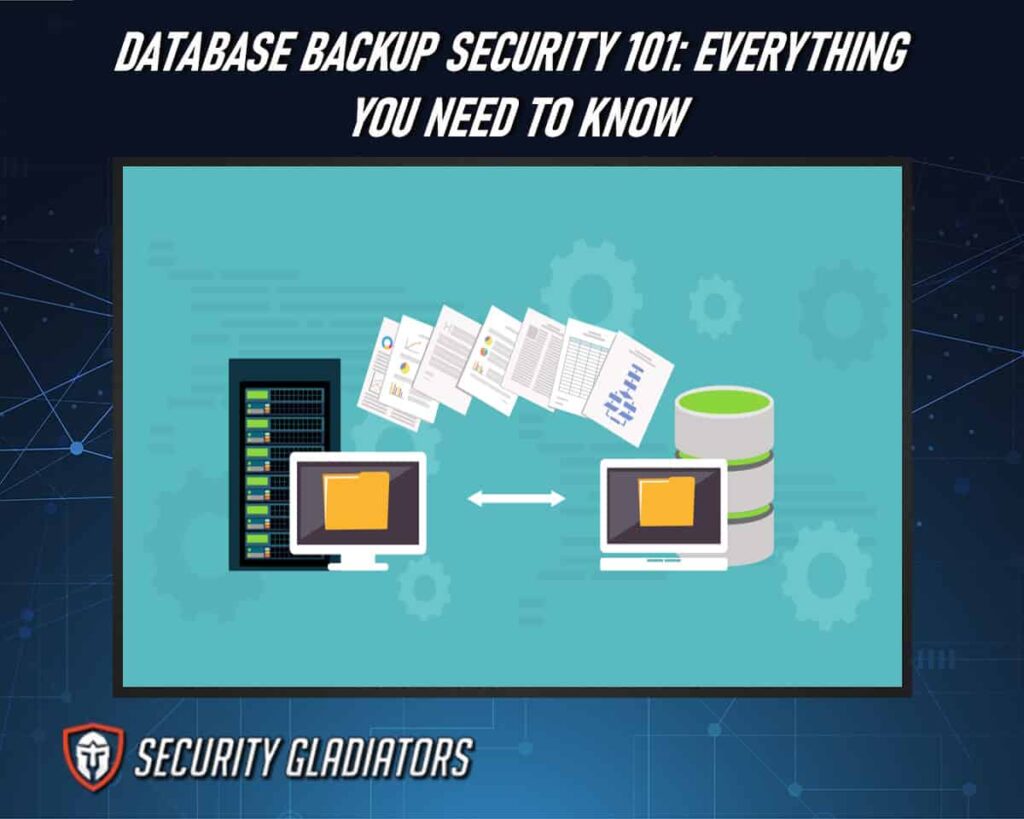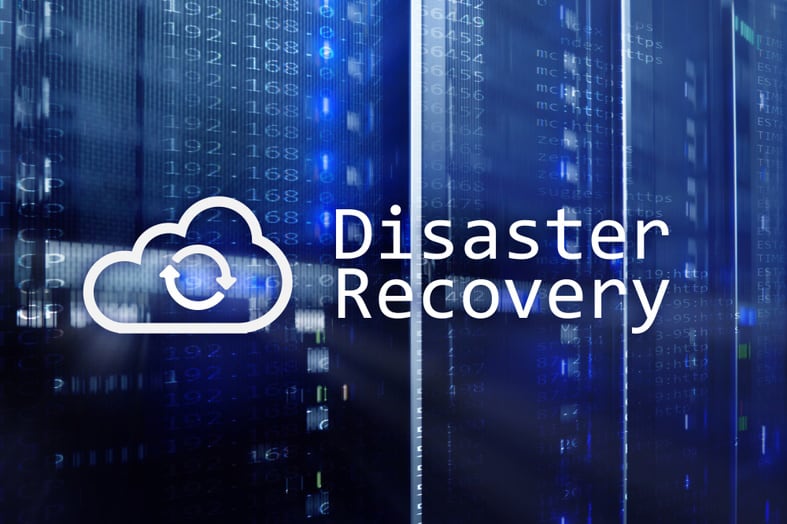
Table of Contents
What Is Database Backup Security?
Database backup security is an essential component of data security and cybersecurity at large. The process ensures the safety of backups in databases such as Microsoft SQL Server, Oracle, and MySQL. This protection includes encryption of sensitive information, secure backup storage space and a reliable encryption key to protect access to them. Organizations should use SQL Server Managed Backup Services to ensure their database backups are securely managed while providing quick recovery time objectives (RTO) when needed. The encryption key should be stored securely and only accessible by authorized personnel, while all database backups should also be regularly monitored and tested for any anomalies or compromised files. A robust backup security such as a cloud storage system can minimize data corruption due to malicious activity or natural disasters. In addition, it makes organization’s data secure.
Why Is Database Backup Security Important?
Database backup security is crucial for any organization that relies on data to function. Without proper security measures in place, data can be lost, stolen, or compromised, leading to serious consequences such as financial losses, legal liabilities, and damage to reputation. In addition, data backup security is essential for compliance with data protection regulations, which require organizations to safeguard sensitive information and prevent unauthorized access. By implementing robust backup security measures, organizations can ensure that their data is protected from a wide range of threats, including cyberattacks, hardware failures, and natural disasters. This can provide peace of mind and allow businesses to focus on their core operations without worrying about the safety of their data.
Types of Database Backup Security
There are several effective methods for protecting against unauthorized access or corruption of a database, which includes the following:
Database Encryption Key
This type of security allows users to encrypt their databases with an encryption key and decrypt them only with the correct password. This prevents any malicious user from accessing the information stored in the database.
SQL Server Management Studio (SSMS)
SSMS gives administrators granular control over who can access specific parts of the database and what actions they can perform on it. Administrators can also set up automated backups that will run regularly, ensuring that important data is always backed up in case of accidental deletion or corruption.
Data Backups
Regularly backing up your data helps protect against lost or corrupted records due to software bugs or hardware failures. It also serves as a tool for restoring deleted information quickly if needed.
Database Backup Software
Many companies offer specialized software packages designed specifically for creating secure backups and managing multiple versions of a single file. These tools make it easy to create frequent and reliable backups without having to manually copy files every time there’s a change made to the source code.
Access Backups
Creating separate accounts with different levels of access privileges further enhances security by preventing one user from making changes that could affect other users’ workflows or cause data loss. Additionally, granting read-only access ensures that no alterations can be made accidentally or intentionally by unauthorized individuals.
By implementing these techniques such SQL server backups, organizations can ensure their sensitive data is in a secure storage space, while providing authorized personnel with appropriate access rights necessary for day-to-day operations.
Implementing Database Backup Security
Implementing database backup security involves ensuring that backups of your database are protected from unauthorized access and are available when needed. Here are some steps to follow:
Encryption
Encrypting your backups ensures that even if someone gets hold of them, they won’t be able to read the data. You can keep your data in encrypted backup file using built-in database encryption or third-party encryption tools.
Access controls
Limiting access to backups is crucial for ensuring their security. Only authorized personnel should access data backups. Use access controls to restrict who can access backups, and consider using multi-factor authentication to further secure access.
Storage Location
Where you store your backups can also affect their security. Keep data backups secure in a secure and reliable environment, ideally off-site, and use secure protocols to transfer them between locations.
Regular Testing
Regularly testing your backup procedures helps ensure backups are working correctly and can be restored. Test backups in a controlled environment to ensure they are complete and accurate.
Monitoring
Monitor access to backups and regularly review logs to identify any suspicious activity. Be aware of any changes to backup configurations or storage locations, and investigate any anomalies.
Disaster Recovery Plan
In case of a disaster, having a plan in place to recover your data is crucial. Test your disaster recovery plan regularly to ensure that it works as expected.
Challenges of Database Backup Security
Ensuring the security of database backups can be a significant challenge for organizations. Here are some of the key challenges of database backup security:
Unauthorized Access
Unauthorized access to database backups is a common challenge that organizations face. If an unauthorized user gains access to backup data, they can potentially access sensitive information and compromise the security of the organization’s systems.
Data Loss
If backups are not properly secured and stored, there is a risk of data loss in the event of a disaster or system failure. Backups can also be lost if they are not properly managed, such as overwritten or accidentally deleted.
Data Breaches
Database backups can be a target for cybercriminals looking to steal sensitive information. If backups are not properly secured, they can be accessed by unauthorized users who can then use the data for malicious purposes.
Compliance Requirements
Organizations may be subject to various compliance regulations that require them to protect their data backups. For example, the General Data Protection Regulation (GDPR) requires organizations to protect personal data, including backups.
Resource Constraints
Ensuring the security of database backups requires resources, including time, money, and staff. Organizations may not have the resources to implement robust backup security measures, leaving them vulnerable to security breaches.
Complexity
Backing up databases can be complex, especially if an organization has multiple databases that need to be backed up. Ensuring the security of backups adds another layer of complexity, requiring specialized knowledge and expertise.
How to Monitor Database Backup Security
Organizations must monitor their database backup security on a regular basis in order to maintain the integrity of the system. When monitoring database backup security, organizations should consider granting access only to authorized personnel with relevant privileges. Furthermore, they must implement effective backup practices by regularly backing up databases while incorporating an asymmetric key encryption scheme in order to safeguard sensitive information from cybercriminals. Organizations should also be mindful of who has access to stored backups and ensure that all employees follow secure protocols. By performing routine checks and implementing adequate measures, businesses can robustly defend against potential threats and protect their data assets.
Types of Database Backup
Backing up databases is crucial for any organization as data loss can be catastrophic and lead to significant business disruption. Here are some backup solutions for databases:
Full Backups
This is the most basic backup solution where a complete database backup is taken periodically. This can be done daily, weekly, or monthly depending on the size of the database and the frequency of updates.
Incremental Backups
Only the changes made to the database since the last backup are saved in this backup solution. This reduces the amount of data that needs to be backed up, and also reduces the time required to complete the backup.
Differential Backups
This is similar to incremental backups, but only the changes made since the last full backup are saved. This can be faster than a full backup and provides more granular recovery options than an incremental backup.
Cloud-based Backup Solutions
Many cloud providers offer backup solutions for databases, which can provide a high level of data protection and reliability. Some examples include Amazon Web Services (AWS) Backup, Microsoft Azure Backup, and Google Cloud Backup.
Backup Software
Many backup software solutions are available that can be used to back up databases. Some popular options include Acronis Backup, Veeam Backup, and Commvault.
Replication
Replication involves copying data from one database to another in real-time, providing a near real-time backup solution. This can be an effective backup solution for databases that require high availability.
Disaster Recovery and Database Backup Security
Disaster recovery refers to a set of procedures and techniques that organizations use to recover their IT infrastructure and operations after a natural or man-made disaster. A disaster recovery plan should include a comprehensive backup and recovery strategy, ensuring critical data can be recovered during a disaster. Disaster recovery tools such as NAKIVO Nutanix backup solution provides automated backup and recovery of Nutanix virtual machines (VMs), with features such as incremental backups, global data deduplication, and instant recovery.

Disaster recovery and database backup security are essential to any organization’s information technology (IT) infrastructure. Both disaster recovery and database backup security help organizations protect their critical data, ensure business continuity, and mitigate the risks associated with data loss.
Testing Database Backup Security
It is important to test the master database and server certificate restoration processes on their respective servers to ensure they can be safely restored in an emergency. Testing should also include restoring data from multiple sources, such as older tapes or disks with different versions of databases, verifying that only authorized personnel have access to these resources, and validating file system permissions throughout the process. Special emphasis must be put into testing the entire data recovery plan steps by simulating a real disaster scenario, allowing organizations to identify potential problems that may arise during the restoring process.
Database Backup Security Compliance
Database backup security compliance refers to the measures and processes organizations implement to ensure that their backup data is protected per relevant regulations and standards. Compliance requirements may vary depending on the industry and jurisdiction in which the organization operates. To ensure compliance with best practices for sensitive data storage, organizations should consider these three key points:
- Implementing strong authentication protocols to protect access to stored data files
- Ensuring that backup data capture is up-to-date and complete
- Establishing safe storage practices for customer data.
Note:
By taking a proactive approach to database backup security, businesses can reduce the risks associated with data loss and theft while providing peace of mind to customers that their personal information is being handled securely. Moreover, having comprehensive policies and procedures in place will also help them stay compliant with current industry regulations related to private data protection.The Future of Database Backup Security
The future of database backup security is likely to see an increased focus on data privacy and protection. With the proliferation of cloud computing and remote work, securing data backups is becoming more complex, and companies will need to invest in advanced security measures to keep their data safe. Some potential developments in this area include the use of encryption, cloud security and blockchain technology to enhance backup security.

One major trend in backup security is the increasing use of encryption. Encryption is a powerful tool that can protect data from unauthorized access and be used to secure database backups. In the future, we can expect to see more companies adopting encryption technologies to secure their backups. This will likely involve a combination of software-based encryption tools and hardware-based encryption solutions.
Another potential development in the future of database backup security is the use of blockchain technology. Blockchain is a distributed ledger technology that can provide an additional layer of security to back up data. By storing backup data on a blockchain network, companies can ensure their backups are tamper-proof and cannot be altered or deleted. This can provide additional protection against data breaches and cyber attacks, which are becoming increasingly common in today’s digital landscape.
Frequently Asked Questions
What Are the Cost Implications of Implementing Database Backup Security?
The primary costs include software, hardware, training and maintenance costs associated with securely backing up data on a regular basis. Additionally, there may be additional costs related to managing access control policies or other measures that need to be taken in order to protect the backups from unauthorized access.
How Do I Ensure My Database Backup Security Is Up to Date?
This can be done by regularly checking all existing backups, ensuring they are complete, have not been compromised by external interference or manipulation, and that any changes made to the data are secure and recoverable. It also involves ensuring the systems used for backing up data remain current with vendor updates and implementing other measures such as encryption and authentication protocols, to further protect the integrity of stored information.
What Are the Differences Between Manual and Automated Database Backup Security?
Manual backups require less maintenance as they are usually done as needed. In contrast, automated backups can offer more up-to-date data protection since they occur regularly. Manual backups may be simpler to manage but require user involvement for each instance, whereas automated backups take away that responsibility by creating a predetermined schedule for backing up data. It is important to weigh all options before deciding which method best suits your organization’s needs.
How Often Should I Run Database Backup Security Tests?
Running database backup security tests on a regular basis is critical to ensure the safety of important data. It is recommended that organizations run these tests at least once every two weeks and more often if possible, depending on the size and nature of their databases. This frequency allows for quick detection and repair of any security flaws or breaches in order to prevent further damage.
Conclusion
It is essential for businesses to invest in database backup security to protect critical data and reduce potential losses. A well-structured system of measures and procedures must be established, including regularly scheduled tests and updates, to ensure the highest level of protection. The cost implications should not be underestimated, as the price of failing to secure backups can be extremely high. At Microsoft, we strive to provide our customers with best-in-class services that are scalable, secure and reliable.

